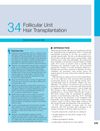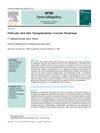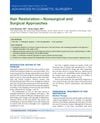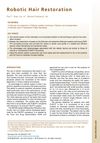Co-Editors’ Messages
May 2013
in “
Hair transplant forum international
”

TLDR A man had hiccups for several days after a hair transplant, likely due to medication or nerve irritation, but they stopped on their own.
In 2013, a case was reported where a man in his late 30s experienced persistent hiccups during and after a Follicular Unit Extraction (FUE) hair transplant procedure. The patient had 2,500 grafts over two days and was pre-medicated with 10mg diazepam and 35mg prednisolone orally. Intra-operatively, lidocaine 1%, bupivacaine 0.5%, and triamcinolone with epinephrine 1:100,000 were used. The hiccups persisted for several days but were not distressing to the patient. Persistent hiccups are described as lasting 48 hours or more and intractable as lasting more than 1 month. The incidence of hiccups in hair transplantation is very low, described in one case series as 0.2%. The cause of hiccups in relation to hair transplant surgery was not well-documented in the literature, but it was reported as being a side effect most commonly of diazepam and occasionally associated with irritation of the vagus nerve in strip surgery. The patient's hiccups resolved without treatment after 4 days.




